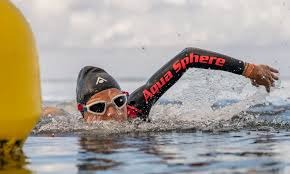Whether you’re a seasoned open-water swimmer or someone preparing for your first triathlon, the right gear can make a significant difference. Swimming wetsuits are designed not only to provide warmth and buoyancy but also to enhance your performance in the water. By improving your speed, comfort, and safety, wetsuits can transform the way you experience swimming in open water. Here’s how a swimming wetsuit can boost your performance and why it’s essential for serious swimmers.
1. Increased Buoyancy for Better Body Positioning
One of the primary functions of a swimming wetsuit is to provide buoyancy. Wetsuits are made from high-quality neoprene, a material that is inherently buoyant. The buoyancy of a wetsuit helps keep your body in a better position while swimming. Maintaining an optimal body position in the water is crucial for improving speed and efficiency. The wetsuit lifts your lower body, helping prevent drag and ensuring that you’re swimming in a streamlined posture.
For swimmers who struggle with keeping their legs afloat in open water, a wetsuit can make a significant difference. It allows for a more balanced swimming position, ensuring that your torso and legs are aligned. This alignment helps you maintain a smoother stroke, ultimately increasing your speed and reducing the energy you exert during long swims.
2. Improved Warmth and Comfort in Cold Water
Swimming in cold water can be uncomfortable and even dangerous if not prepared properly. Hypothermia is a real risk for swimmers who don’t have the right protection against low temperatures. Wetsuits are made so that there is a small layer of water between your skin and the suit. As your body heats this water, it forms an insulating layer that helps keep your body warm in cooler water conditions.
By maintaining body heat, swimming wetsuits prevent your muscles from getting stiff, which can slow down your swimming and affect your endurance. With the extra warmth, you can swim farther without getting tired from the cold, so you can focus on your skill and performance instead of being cold or uncomfortable.
3. Enhanced Hydrodynamics and Speed
A wetsuit is made with hydrodynamic qualities that help lower drag. This makes it easier to move through the water. The smooth outer surface of a wetsuit minimizes resistance against the water, enabling you to swim more efficiently.
By decreasing drag, the wetsuit lets you move through the water with less effort, translating into faster swim times and reduced fatigue. This is especially noticeable when swimming in open water, where currents and waves can slow down unprotected swimmers. The streamlined design of a wetsuit ensures that every stroke works with the water instead of fighting against it.
READ MORE : Build Lasting Loyalty with Davnoot’sBuild Lasting Loyalty with Davnoot’s
4. Protection Against the Elements
Open-water swimmers face more than just temperature fluctuations—they also have to deal with the harsh elements in the environment. A wetsuit provides protection against wind, sun, and even marine life. In colder weather, wind-chill can rapidly lower your body temperature, but a wetsuit shields you from the wind, helping to maintain warmth. Similarly, the UV-blocking properties of wetsuits can protect your skin from the sun’s harmful rays during long swims.
Additionally, wetsuits act as a barrier against jellyfish stings and abrasions from rough surfaces like rocks or coral. Whether you’re swimming in a lake, ocean, or river, a wetsuit offers valuable protection from potential hazards that could impede your performance or cause discomfort.
5. Enhanced Confidence and Mental Focus
When you’re swimming in open water, whether it’s a race or just a training session, comfort and confidence are essential. The psychological benefits of wearing a wetsuit cannot be underestimated. Knowing that your body is protected from the cold and that you have added buoyancy to assist your stroke can provide a significant boost in confidence. This mental comfort can help you focus more on your swim technique and performance instead of worrying about the conditions or your ability to stay afloat.
For triathletes, a wetsuit can be a game-changer during the swim portion of the race. Having the right fit and the right features helps swimmers feel prepared to take on the challenge, giving them an edge when it comes to racing against others.
6. Choosing the Right Wetsuit for Your Needs
Selecting the right wetsuit is essential for achieving the maximum performance benefits. The wetsuit’s thickness changes based on how cold the water is. Wetsuits that are lighter are better for warmer water and thicker suits are better for colder water. Additionally, consider the fit of the wetsuit—it should be snug but not too tight, allowing for freedom of movement without water entering the suit.
Other factors to consider include the suit’s flexibility, especially in the arms and shoulders, to ensure smooth, unrestricted strokes. Some wetsuits come with special features like extended neck seals, smooth-skin coatings for extra speed, and extra padding for additional buoyancy. Make sure to choose one that suits your body type and swimming goals.
Conclusion
You can improve your swimming skills with the help of swimming wetsuits, which are more than just a piece of gear. A wetsuit can help you reach your swimming goals, whether they are to swim faster, be more comfortable, or float better. Wetsuits help swimmers focus on their skills and performance by keeping them warm, protecting them, and speeding them up. This lets them swim farther, faster, and with more confidence in open water. Getting the right wetsuit can really improve your swim, and there are so many styles to choose from that there is one that will work for everyone.



